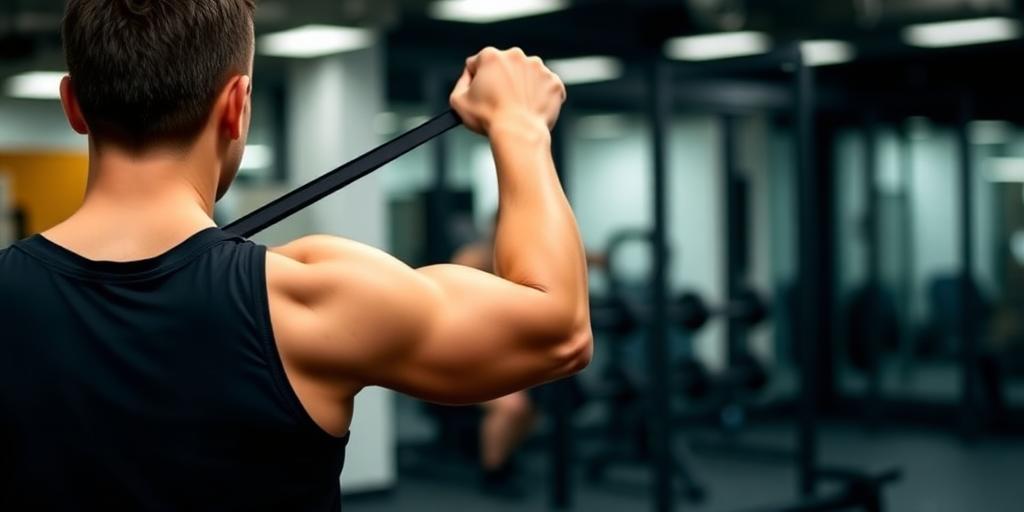Rotator Cuff Injuries: Prevention and Recovery Exercises
The rotator cuff is a group of muscles and tendons that surround the shoulder joint, keeping the head of your upper arm bone firmly within the shallow socket of your shoulder. A rotator cuff injury can cause a dull ache in the shoulder, which often worsens with use of the arm away from the body.
Rotator cuff injuries are common and increase with age. They may occur due to a sudden injury or develop slowly over time. If you're an athlete, particularly one involved in baseball, tennis, volleyball, weightlifting, or swimming, you're more prone to rotator cuff injuries. However, anyone can experience this painful condition. This article provides an informative guide on rotator cuff injury prevention and recovery exercises.
Understanding Rotator Cuff Injuries
Before diving into prevention and recovery, it's important to understand the causes and types of rotator cuff injuries:
- Causes: Overuse, repetitive motions, trauma, poor posture, and age-related degeneration.
- Types: Tendinitis (inflammation of the tendons), bursitis (inflammation of the bursa), strains, and tears (partial or full).
Prevention Strategies
Preventing rotator cuff injuries involves a combination of proper training techniques, strengthening exercises, and flexibility work:
- Warm-Up Properly: Before any physical activity, warm-up your shoulder muscles with light cardio and dynamic stretching. Arm circles, shoulder rolls, and pendulum exercises can help prepare your rotator cuff for activity.
- Strengthen Shoulder Muscles: A strong rotator cuff can better withstand stress and prevent injury. Focus on exercises that target all the muscles of the rotator cuff.
- Maintain Good Posture: Poor posture can place undue stress on your shoulder joint. Sit and stand tall with your shoulders back and down.
- Use Proper Lifting Techniques: When lifting heavy objects, use your legs and avoid twisting your body. Keep the object close to your body to minimize stress on your shoulder.
- Avoid Overuse: Gradually increase the intensity and duration of your activities to avoid overloading your rotator cuff. Take breaks when needed, and listen to your body's signals.
Recovery Exercises
If you've sustained a rotator cuff injury, rehabilitation is crucial for restoring function and preventing recurrence. Consult with a physical therapist or healthcare professional to develop a personalized recovery plan. Here are some common exercises that may be included:
- Pendulum Exercises: Relax your shoulder and let your arm hang down. Gently swing your arm in small circles, forward and backward, and side to side. This exercise helps improve circulation and reduce stiffness.
- External Rotation with Resistance Band: Hold a resistance band with your elbow bent at 90 degrees and close to your side. Slowly rotate your forearm outward, keeping your elbow stable. This exercise strengthens the external rotator muscles.
- Internal Rotation with Resistance Band: Secure one end of a resistance band to a door or stable object. Hold the other end with your elbow bent at 90 degrees and close to your side. Slowly rotate your forearm inward, keeping your elbow stable. This exercise strengthens the internal rotator muscles.
- Scapular Squeezes: Sit or stand with good posture. Squeeze your shoulder blades together, holding for a few seconds. This exercise improves scapular stability and posture.
- Wall Slides: Stand with your back against a wall, with your arms raised to shoulder height and elbows bent at 90 degrees. Slowly slide your arms up the wall, keeping your elbows and wrists in contact with the wall. This exercise improves shoulder mobility and flexibility.
Additional Tips for Recovery
- Rest: Avoid activities that aggravate your shoulder pain. Allow your rotator cuff time to heal.
- Ice: Apply ice to your shoulder for 15-20 minutes at a time, several times a day, to reduce inflammation.
- Pain Management: Over-the-counter pain relievers, such as ibuprofen or acetaminophen, can help alleviate pain and inflammation. In some cases, your doctor may prescribe stronger pain medications.
- Physical Therapy: A physical therapist can guide you through a rehabilitation program to restore strength, flexibility, and function to your shoulder.
Conclusion
Rotator cuff injuries can be debilitating, but with the right prevention strategies and recovery exercises, you can minimize your risk and get back to doing the activities you love. Remember to warm-up properly, strengthen your shoulder muscles, maintain good posture, and avoid overuse. If you do sustain an injury, seek professional medical advice and follow a structured rehabilitation program. With dedication and patience, you can overcome a rotator cuff injury and regain full function of your shoulder.









